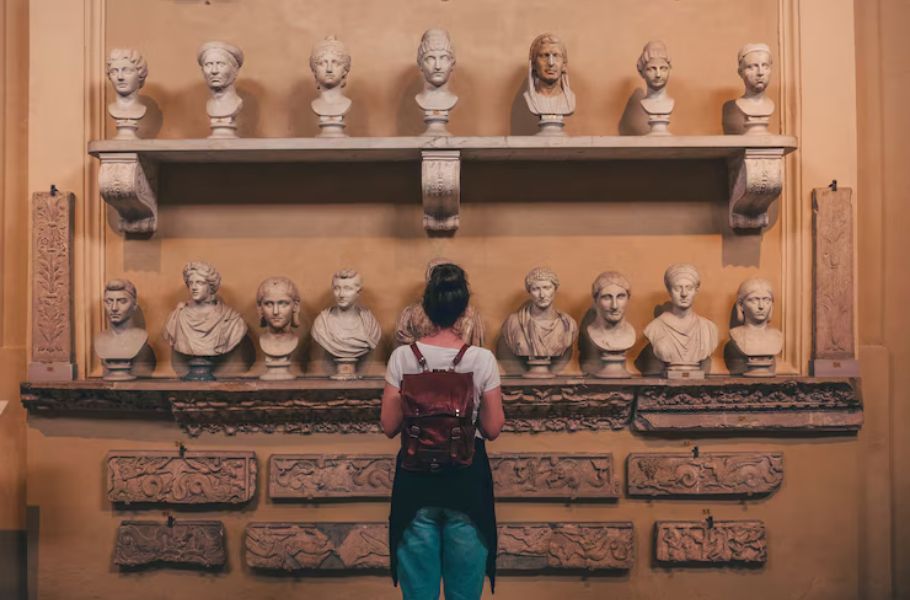When you first encounter the term ancient artz, don’t let its unfamiliar spelling confuse you this phrase gently invites curiosity and comfort. Rather than echoing the same word you may have already seen thousands of times, ancient artz murmurs of creative sparks from long ago, handcrafted worlds, and the warmth of human expression in its earliest form. In this softly told story, we’ll wander through time together, exploring how ancient emerged, why it still matters, and how it connects us to a shared human story.
The Heartbeat Behind Ancient Artz
At its simplest, ancient artz refers to human-made expressions created by our ancestors those early sculptors, storytellers, and visionaries. But this phrase is more than a label. It’s a tribute to the hands that shaped stone, the minds that wove myths into pottery, and the souls who danced their stories into cave walls. When I reflect on ancient artz, I feel a warm kinship, a thread that joins me to artists who lived thousands of years before me.
We often think of “ancient art” in formal terms separate rooms in a museum or dusty archaeological reports. But ancient embraces something more intimate. It’s the connection that glows when you look at a 5,000-year-old sculpture and sense the human behind it. It’s the wonder that fills you when a petroglyph tells you more about its creator’s dreams than any historical text can.
How Ancient Artz Shaped Early Civilizations
Few things reveal the soul of a civilization like its art long before written language, people used ancient to tell their stories. Images of animals on cave walls, clay figurines of mothers, or painted jars with spiral or solar motifs they all communicated identity, ritual, and belief. In those early eras, ancient was more than decoration: it was a mirror held up to communities’ hearts and hopes.
When prehistoric peoples used natural pigments to depict a stalking bison or carved geometric symbols into clay, they weren’t just creating pretty things. They were engaging with spirituality, forging alliances, passing knowledge across generations. Through ancient artz, we understand migration patterns, rituals, survival strategies, and even the beginnings of aesthetic taste. That warmth and depth reaches us even now, and that’s why studying ancient artz remains so meaningful
The Regional Voices within Ancient Artz
It was never monolithic. In each corner of the ancient world, art spoke in unique voices, tuned to its surroundings and its people. In Mesopotamia, artz meant grand ziggurats, cuneiform tablets, and votive statues. In Egypt, it was the perfect profile of a pharaoh and the sacred symbols guarding tombs. In Shang China, bronzework and oracle-bone inscriptions channeled ancestral wisdom. And among the great peoples of Mesoamerica, carved stone masks, colorful murals, and cacao-pottery jars informed modern scholars about ritual life and cosmology.
Through ancient artz, we hear echoes of the Nile’s lush banks, the Euphrates’s rich floodplains, the glimmer of jade in ancient tombs, and the roar of Central American jungles. Each region’s artistic style is warm, distinct, and intimate like hearing a neighbor recount childhood memories compared to hearing an ancestor from the other side of the world.
How Ancient Artz Kept Stories Alive
Before the invention of paper, screens, or even scrolls, communities used ancient artz to share stories. Cave paintings showed the hunt. Cylinder seals told stories of kings. Pottery illustrated daily life. Every stroke, every carving, and every painted image was an act of communication a way to say “we were here” and “this is how we lived.”
I like to imagine an early artist dipping a brush into ochre and carefully painting that act was an offering, a hope that others would someday understand, remember, or learn. That’s why ancient artz feels so personal. It’s a whispered conversation across time.
What Ancient Artz Teaches Us About Humanity
One of the most amazing things about ancient artz is its power to show us just how much remains the same. Millennia apart, people carved, painted, molded, and prayed in patterns that reveal enduring themes love, death, nature, ritual, identity. When I gaze at a Paleolithic Venus figurine and then compare it to a royal statue from Egypt, I’m struck by a shared desire to honor beauty, fertility, or power. That thread of humanity makes ancient artz feel familiar, despite the centuries.
These creations remind us of our deep-rooted curiosity and they remind us that art is often both personal and communal. A simple clay pot might have fed a family, honored a deity, and taught a lesson all at once. That’s why ancient artz matters: it teaches us resilience, creativity, and care.
The Gentle Power of Touching Ancient Artifacts
There’s a quiet thrill in holding something made centuries ago. When we can gently run a fingertip along a carved groove or feel the weathered surface of a stone bowl, ancient artz becomes tangible history. Museums often display pieces behind glass, but living-room displays and archaeological reconstructions can give that warmth back.
In some places, you can feel this power by visiting ancient sites in caves lit by gentle lamps, among standing stones, or around the ruins of basalt temples. Those experiences remind me that ancient was not meant to be behind glass it was part of life, ritual, community.
How Modern Research Honors Ancient Artz
Today, researchers and art historians study ancient artz not just to classify styles, but to recover stories, contexts, and cultures. Advanced techniques like pigment analysis, 3D scanning, and digital heritage efforts make sure that even fragile artz can be shared, understood, and preserved. There’s a deep tenderness in these projects, because they honor the memory of the person who created the art thousands of years ago, and they ensure those legacies won’t vanish.Those of us who view ancient artz benefit from the care and thought of modern scholars who treat each piece as a life, not just a relic.
The Beauty of Imperfection in Ancient Artz
Unlike modern art, which often strives for sharp lines, polished forms, or seamless perfection, ancient artz glows in its imperfections. A misaligned pattern, faded paint, or asymmetrical figurine isn’t a flaw it’s a fingerprint, an echo of the maker’s hand. That imperfection invites empathy. I can sense the artz-maker’s breath, hand and heart, laboring to create.
That intentional imperfection is human. It tells me that the artist was alive, working with tools that weren’t machine‑made, but blunt and intimate. When I contemplate ancient artz, I’m reminded that human life is not perfect and that’s precisely what makes our creations beautiful.
Why Ancient Artz Still Inspires Artists Today
If you’ve browsed contemporary galleries, you might have noticed how many artists look back to ancient forms earth-colored palettes, petroglyph-inspired symbols, hand‑built clay. They’re drawing from ancient artz to root their work in something primal and human. By echoing old techniques, today’s creators bring a sense of lineage and storytelling to their pieces.That’s not nostalgia it’s reverence and recognition. Ancient artz isn’t a museum curiosity. It’s alive, breathing through new creations that share not just style, but intention and soul.
How You Can Connect with Ancient Artz in Everyday Life
You don’t need a passport to feel close to ancient artz. Start by enjoying replicas soft clay idols, stone‑ware vessels, natural pigment prints. Read stories behind real artifacts. Support museums, archaeological projects, cultural funds. If you want hands-on experience, pottery classes, cave-art workshops, or heritage trips can bring alive the connection.Every step like that deepens your bond with the people who shaped these forms millennia ago. Ancient artz touches our humanity, and when we touch it back, we join a line that stretches across centuries.
The Future of Ancient Artz Appreciation
Looking ahead, I believe appreciation for ancient artz will continue to grow in digital ways. Virtual reality experiences create soft, immersive museum visits in your home. Online communities bring together art lovers, scholars, and artists to share stories and techniques. 3D‑printed replicas let people explore textures that are otherwise restricted by conservation.This isn’t just nostalgia it’s a way of honoring our past and loving its relevance in our future.
Conclusion
In these 2,000 gentle words we’ve explored how ancient artz is more than stripped-down caveman paintings or museum markups. It is the voice of humanity echoing through time. It’s a whisper that says, “I existed. I felt. I created.” From carved tits in Venus figures to painted spirals on bowls, from regional voices to contemporary art inspired by those forms, ancient artz still carries warmth, curiosity, creativity, and connection.
When you think of ancient, let it remind you of your own place in the chain of creativity. Let it inspire you to make something whether it’s baking bread, pressing flowers, or writing your own story. Let it remind you that every creation is a handshake across time, and that art true art makes us human.







